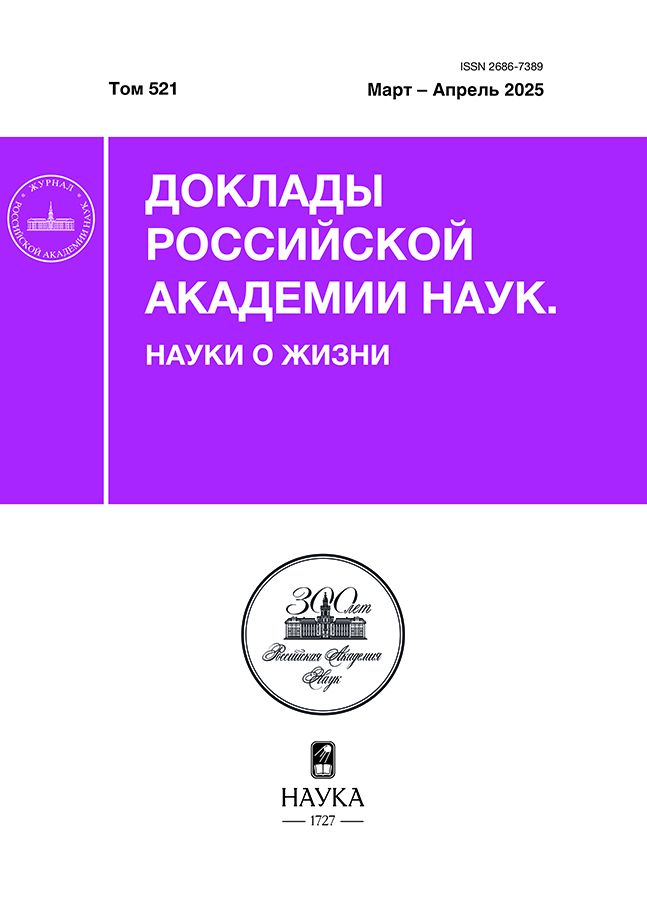Search and verification of Betula nana L. hybrid samples in the Urals
- Autores: Medvedeva S.O.1, Cherepanova O.E.1, Petrova I.V.1, Teptina A.Y.2
-
Afiliações:
- Botanical Garden, UrB RAS
- Ural Federal University
- Edição: Volume 521, Nº 1 (2025)
- Páginas: 193-197
- Seção: Articles
- URL: https://cijournal.ru/2686-7389/article/view/684004
- DOI: https://doi.org/10.31857/S2686738925020047
- ID: 684004
Citar
Texto integral
Resumo
Using the flow cytometry method, hybrid samples were verified in B. nana populations, most of which were identified in the northern part of the Ural Mountains. Analysis of the ITS1 region nucleotide sequences obtained using the Sanger method showed low differentiation of B. nana and B. pubescens species associated with current and ancestral hybridization processes. Analysis of intragenomic polymorphism of ITS1 sequences using Illumina technology revealed the presence of rDNA of both B. nana and B. pubescens in first-generation interspecific hybrids genome.
Palavras-chave
Texto integral
Sobre autores
S. Medvedeva
Botanical Garden, UrB RAS
Autor responsável pela correspondência
Email: so.medvedeva@gmail.com
Rússia, Ekaterinburg
O. Cherepanova
Botanical Garden, UrB RAS
Email: so.medvedeva@gmail.com
Rússia, Ekaterinburg
I. Petrova
Botanical Garden, UrB RAS
Email: so.medvedeva@gmail.com
Rússia, Ekaterinburg
A. Teptina
Ural Federal University
Email: so.medvedeva@gmail.com
Rússia, Ekaterinburg
Bibliografia
- Медведева С.О., Черепанова О.Е. Таксономические вопросы рода Betula // Сибирский лесной журнал. 2023. № 2. C. 65–75
- Anamthawat-Jónsson, K. Hybrid introgression: the outcomes of gene flow in birch // ScienceAsia. 2019. V.45. No. 3. P. 203
- Cherepanova O., Medvedeva S., Filippov E. et al. Biodiversity Evolution of a Shrub Betula nana L. Populations in the Urals // International Journal of Forestry Research. 2024. 2644583.
- White T.J., Bruns T., Lee S., et al. Amplification and direct sequencing of fungal ribosomal RNA genes for phylogenetics. In: Innis M.A., Gelfland D.H., Sninsky J.J., White T.J., eds. PCR protocols: a guide to methods and applications. New York: Academic Press, 1990.
- Callahan B.J., McMurdie P.J., Rosen M.J., et al. DADA2: High-resolution sample inference from Illumina amplicon data // Nature Methods. 2016. No. 13.
- Anamthawat-Jónsson K., Thórsson T., Temsch E. M. et al. Icelandic Birch Polyploids — The Case of a Perfect Fit in Genome Size // Journal of Botany. 2010. 347254.
- Jetlund S. Introgressive hybridization between the birch species (Betula pubescens ssp. tortuosa) and Betula nana in the mountains in Gudbrandsdalen, Norway // Norw J Agr Sci. 1994. No. 18, P. 15–18.
- Wang N., McAllister H.A., Bartlett P.R. et al. Molecular phylogeny and genome size evolution of the genus Betula (Betulaceae) // Ann Bot-London. 2016. No. 117
- Sun K., Ma R., Chen X., Li C. et al. Hybrid origin of the diploid species Hippophae goniocarpa evidenced by the internal transcribed spacers (ITS) of nuclear rDNA // Belg. J. Bot. 2013. V.136. No. 1. P. 91-96
- Osuna-Mascaro C., de Casas R. R., Berbel M., et al. Lack of ITS sequence homogenization in congeneric plant species with different ploidy levels // bioRxiv. 2022.
- Пунина Е.О., Мачс Э.М., Носов Н.Н., и др. NGS-секвенирование (Illumina) как инструмент для определения геномного состава и таксономической принадлежности видов и межвидовых гибридов на примере злаков трибы Ячменевых (Hordeeae) // Проблемы ботаники Южной Сибири и Монголии, 2023. Т. 22, № 2. С. 276–286
- Belyakov E.A., Mikhaylova Y.V., Machs E.M., et al. Hybridization and diversity of aquatic macrophyte Sparganium L. (Typhaceae) as revealed by high-throughput nrDNA sequencing // Scientific Reports. 2022. V. 12. No. 1. P. 21610.
- Turchetto C., Segatto A.L., Beduschi J., Bonatto S.L., Freitas L.B. Genetic differentiation and hybrid identification using microsatellite markers in closely related wild species // AoB Plants. 2015. V. 7.
Arquivos suplementares

Nota
Presented by Academician of the RAS V.N. Bolshakov











